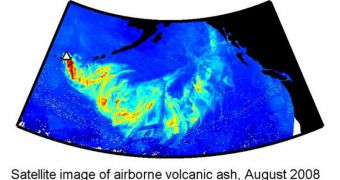Over the past few year, the idea that geoengineering is a viable solution for averting the effects of global warming has garnered a lot of support, but a new study suggest the enthusiasm was premature.
There are several methods to go about modifying the environment at a large scale so that temperatures drop. One of them is to fertilize the ocean with small particles, that are a source of food for phytoplankton blooms.
Until now, the thinking went that promoting phytoplankton blooms would have a direct positive effect on the environment, given that these microscopic creatures can strip carbon dioxide right out of the atmosphere.
In 2008, the eruption of an Alaskan volcano gave researchers the chance they have been waiting for. The particles emitted from the eruption fueled a massive bloom right off the coast from the volcano.
Much to their disappointment, experts observed that, while the bloom indeed grew to impressive sizes, the amount of CO2 is took out of the atmosphere was modest at best.
Even the most fervent supporters of geoengineering had to take a moment to reassess the technique. The Kasatochi volcano in the Aleutian Islands spewed ash over a significant area.
The plumes traveled above the Pacific Ocean, where they covered a surface of 580,000 to 770,000 square miles (1.5 million to 2 million square kilometers), with a length of 620 miles.
Roberta Hamme, an oceanographer with the University of Victoria in Canada, was on-site as the bloom was taking place, and characterized it as an “ocean productivity event of unprecedented magnitude.
The eruption was the first in recorded history to prove that iron-rich ash plumes can fertilize oceans, scientists said at the time. It also created the largest bloom ever observed via satellite imaging.
Hamme now tells Our Amazing Planet that mimicking the effects of a volcano eruption would be nearly impossible with existing technologies, even if the method was proven efficient.
“What really allowed this ash to hit such a large area was the fact there was a storm system forming over the volcano when it erupted, and the ash got swirled around,” the expert says.
“Unless you could somehow put vast amounts of iron-containing particles into a storm going in the right direction for you, I think replicating this would be pretty hard to do,” Hamme argues.
“Despite the huge area of iron addition and the optimal time of year when there was plenty of sunlight, the impact of this August 2008 event in terms of carbon dioxide absorption was quite small,” she adds.
“This tells us that iron fertilization would have to be performed on a truly gigantic scale to have an impact on our climate,” Hamme concludes.

 14 DAY TRIAL //
14 DAY TRIAL //